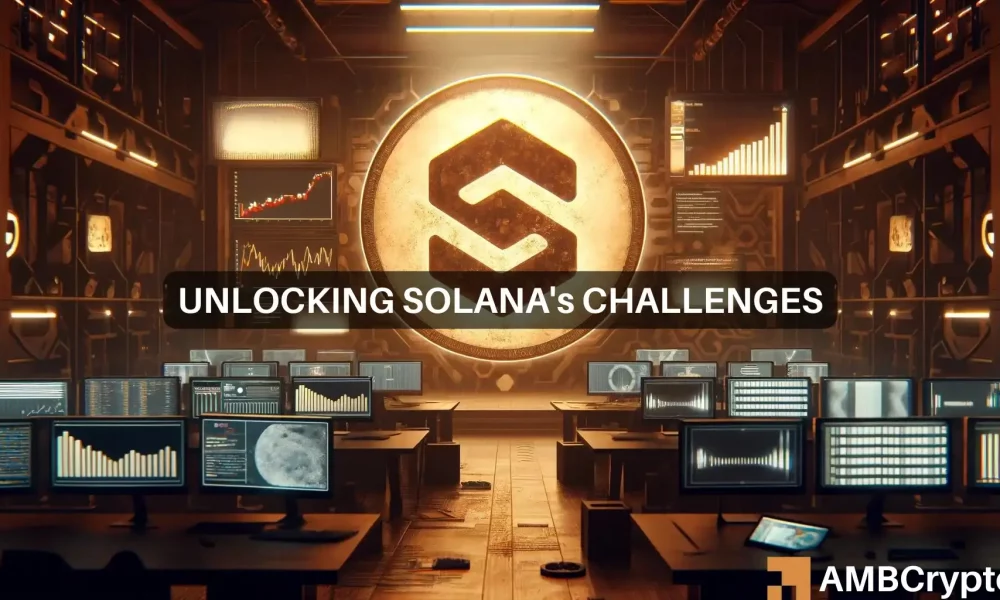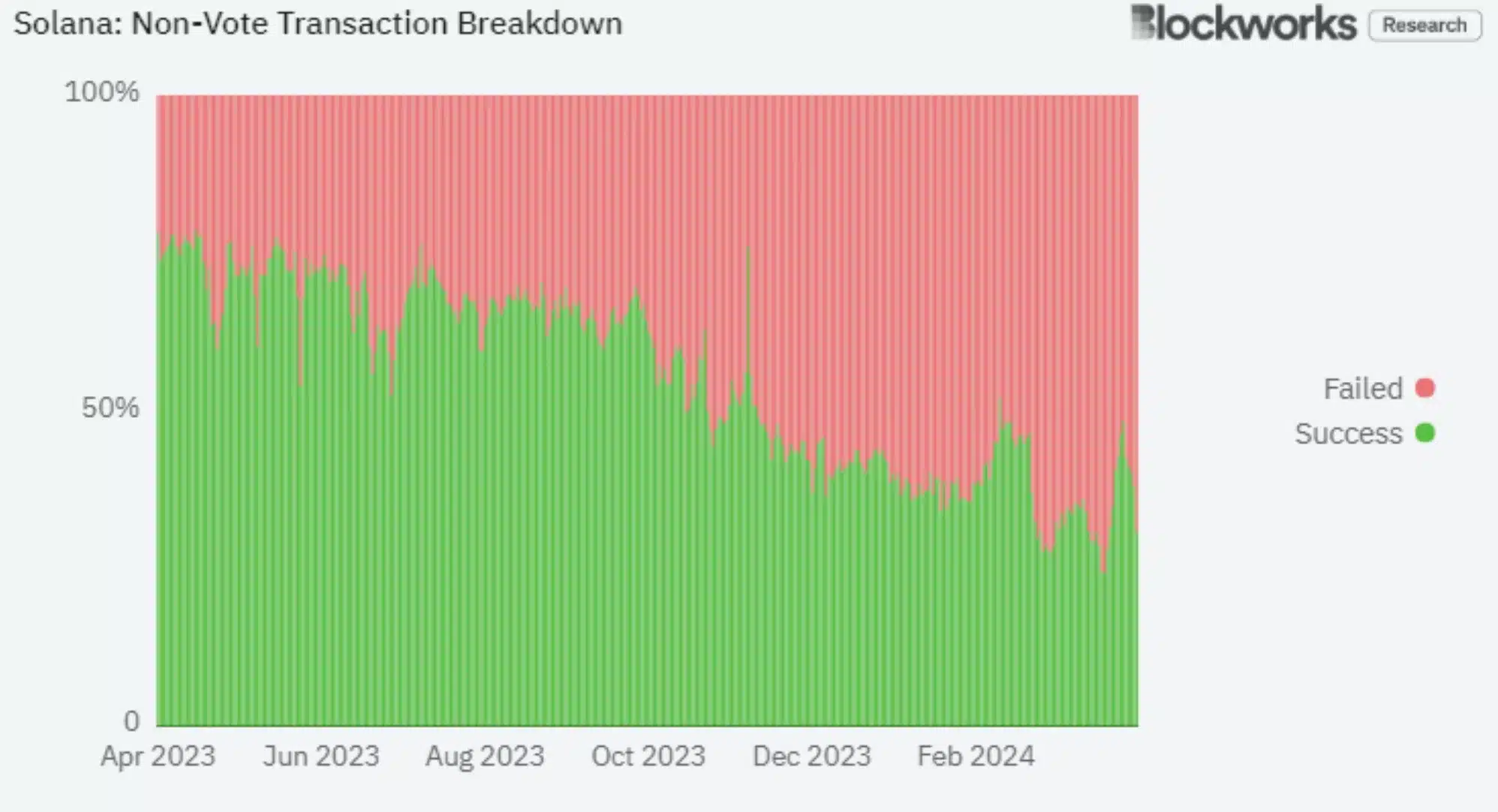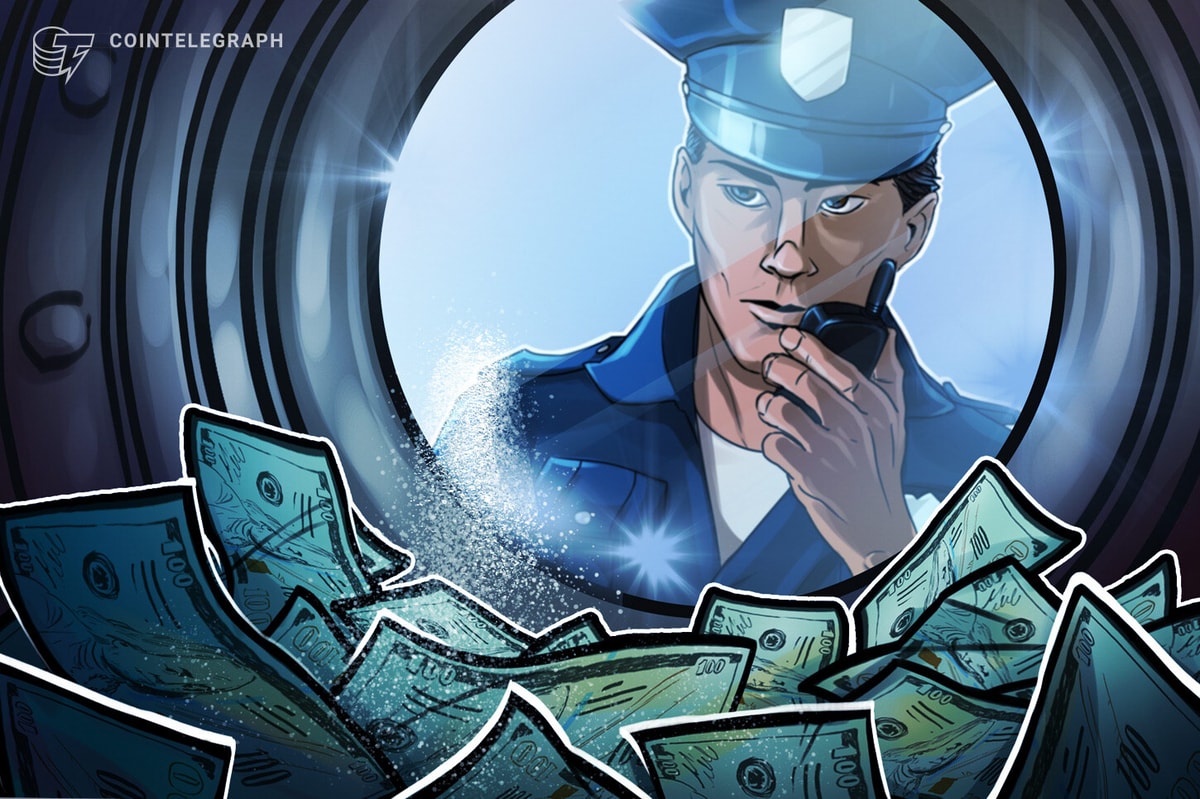- Solana’s price surge v. failed transactions highlighted scalability challenges
- Anza’s fixes on the testnet addressed Solana’s congestion, but concerns linger
With Bitcoin’s [BTC] halving now done and dusted, the market seems to be on the edge of recovery. At the time of writing, Bitcoin, along with other altcoins, were predominantly in green, with Solana [SOL] notably surging by 6% in just 24 hours.
Contrary to SOL’s bullish price trajectory, however, of late there has been a disproportionate amount of failed transactions on the Solana network.
Network issues galore
Shedding light on how spammers inflated the number of failed transactions on the blockchain network, Dan Smith, a research analyst, took to X (Formerly Twitter) and claimed,
“The average “real user” sends under 50 txs. per day with a failure rate of 8%, so around 1 in every 10 txs fails. 97% of addresses fall in this group, and they are collective responsible for 0.6% of total failed txs.”
Additionally, talking about a small number of addresses, likely bots, that generated a majority of the failed transactions, he added,
“Any addresses that sends over 5,000 txs per day is clearly a bot. Yesterday there were 879 addresses that hit this mark, and they created 95% of the total failed transactions with a failure rate of 79%.”
Well, this isn’t the first time Solana’s congestion issues have come into the spotlight. On 4 April, Solana faced significant congestion issues with over 75% of transactions failures.
In its aftermath, Anza, a pivotal Solana player, pinpointed QUIC and Agave validator client issues. They fixed it on the testnet before the mainnet rollout. Alas, it was all in vain, according to analysts.
What is the data indicating?
Mocking the chart presented by Blockworks, Smith said,
“This chart does not capture dropped transactions, which are [1] terrible UX for “real users” and [2] a real problem for Solana atm.”
In defense Matt Sorg, Solana’s Tech and Product Lead in his blog post shared,
“Solana is a highly efficient protocol that hasn’t nearly hit its scaling ceiling.”
Is this reducing SOL’s user activity?
Here, it’s worth noting that Smith believes that while failed transactions may not be relevant for assessing real user activity, they are still significant from a technical perspective in understanding the network’s capacity and performance.
That being said, data indicates that the number of negative comments about Solana on social media outweighs the positive ones. Simply put, all these issues may be having a social effect on the network after all.
Read More: ambcrypto.com











 Bitcoin
Bitcoin  Ethereum
Ethereum  Tether
Tether  XRP
XRP  Solana
Solana  USDC
USDC  Dogecoin
Dogecoin  Cardano
Cardano  TRON
TRON  Lido Staked Ether
Lido Staked Ether  Wrapped Bitcoin
Wrapped Bitcoin  Sui
Sui  Wrapped stETH
Wrapped stETH  Chainlink
Chainlink  Avalanche
Avalanche  Stellar
Stellar  Hyperliquid
Hyperliquid  Shiba Inu
Shiba Inu  Hedera
Hedera  LEO Token
LEO Token  Bitcoin Cash
Bitcoin Cash  Toncoin
Toncoin  Litecoin
Litecoin  Polkadot
Polkadot  USDS
USDS  WETH
WETH  Monero
Monero  Binance Bridged USDT (BNB Smart Chain)
Binance Bridged USDT (BNB Smart Chain)  Wrapped eETH
Wrapped eETH  Bitget Token
Bitget Token  Pepe
Pepe  Pi Network
Pi Network  Ethena USDe
Ethena USDe  Coinbase Wrapped BTC
Coinbase Wrapped BTC  WhiteBIT Coin
WhiteBIT Coin  Bittensor
Bittensor  Dai
Dai  Uniswap
Uniswap  Aave
Aave  NEAR Protocol
NEAR Protocol  Aptos
Aptos  OKB
OKB  Jito Staked SOL
Jito Staked SOL  Cronos
Cronos  Ondo
Ondo  BlackRock USD Institutional Digital Liquidity Fund
BlackRock USD Institutional Digital Liquidity Fund  Tokenize Xchange
Tokenize Xchange  Ethereum Classic
Ethereum Classic